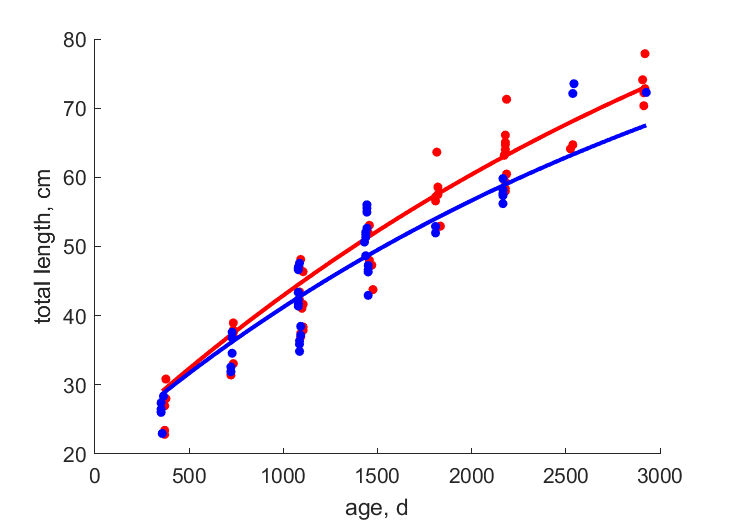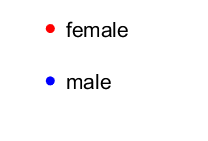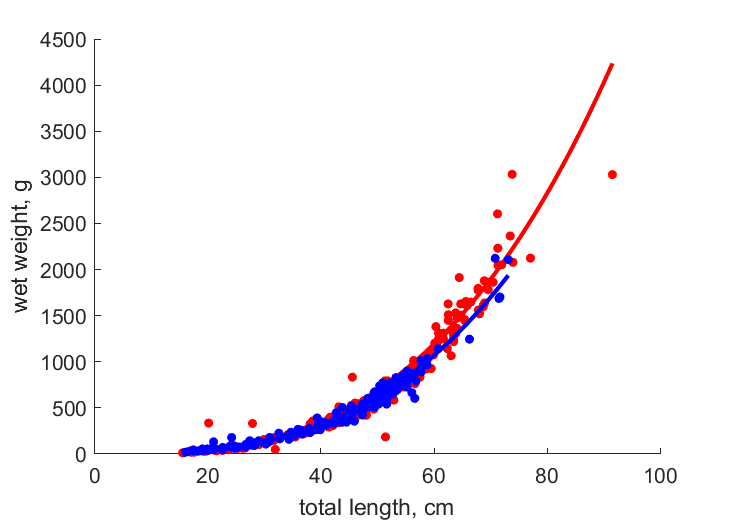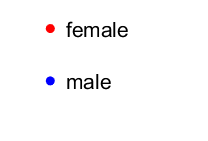Predictions & Data for this entry
| Model: std | climate: MB, MC | migrate: Mo | phylum: |
| COMPLETE = 2.5 | ecozone: MAm, MAE | food: biCi, biCvf | class: |
| MRE = 0.065 | habitat: 0iMcd | gender: D | order: |
| SMSE = 0.013 | embryo: Mv | reprod: O | family: |
Zero-variate data
| Data | Observed | Predicted | (RE) | Unit | Description | Reference |
|---|---|---|---|---|---|---|
| ab | 518.5 | 518.4 | (0.0002573) | d | age at birth | CannRizz1995 |
| tp | 1861 | 1862 | (0.0002257) | d | time since birth at puberty for female | CannRizz1995 |
| tpm | 1204 | 1204 | (0.0002134) | d | time since birth at puberty for male | CannRizz1995 |
| am | 5475 | 5475 | (2.087e-05) | d | life span | AnAge |
| Lb | 16 | 20.38 | (0.2738) | cm | total length at birth | CannRizz1995 |
| Wwb | 50 | 46.24 | (0.07513) | g | wet weight at birth | CannRizz1995 |
| Ri | 0.005479 | 0.005485 | (0.001007) | #/d | maximum reprod rate | AnAge |
Uni- and bivariate data
| Data | Figure | Independent variable | Dependent variable | (RE) | Reference |
|---|---|---|---|---|---|
| tL_f |   | age | total length | (0.06481) | CannRizz1995 |
| tL_m |   | age | total length | (0.07049) | CannRizz1995 |
| LW_f |   | total length | wet weight | (0.1271) | CannRizz1995 |
| LW_m |   | total length | wet weight | (0.09931) | CannRizz1995 |
Pseudo-data at Tref = 20°C
| Data | Generalised animal | Squalus blainville | Unit | Description |
|---|---|---|---|---|
| v | 0.02 | 0.01969 | cm/d | energy conductance |
| kap | 0.8 | 0.9574 | - | allocation fraction to soma |
| kap_R | 0.95 | 0.95 | - | reproduction efficiency |
| p_M | 18 | 17.94 | J/d.cm^3 | vol-spec som maint |
| k_J | 0.002 | 0.002 | 1/d | maturity maint rate coefficient |
| kap_G | 0.8 | 0.8 | - | growth efficiency |
Discussion
- males are assumed to differ from females by {p_Am} and E_Hp only
- temperatures are guessed
Facts
- Ovoviviparous. Depth around 50-149m, but have been found deeper than 700m. (Ref: fishbase)
Bibliography